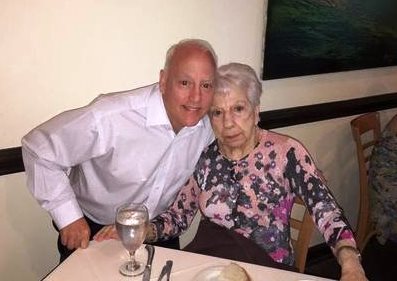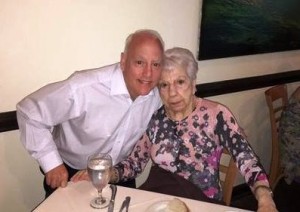
 My mom just passed away at 94. She was in the hospital for two weeks. She had a small bowel obstruction. Had she not had emergency surgery, where they removed two feet of dead intestine, she would have died. Mom was a fighter. Who else could have a screw put in her neck at age 88 and leave the operating room and go to her regular room without even a stop in ICU! As it turned out, she could not handle her rehabilitation this time around and died in hospice a couple of weeks later.
My mom just passed away at 94. She was in the hospital for two weeks. She had a small bowel obstruction. Had she not had emergency surgery, where they removed two feet of dead intestine, she would have died. Mom was a fighter. Who else could have a screw put in her neck at age 88 and leave the operating room and go to her regular room without even a stop in ICU! As it turned out, she could not handle her rehabilitation this time around and died in hospice a couple of weeks later.
What a contrast in care between the hospital and residential hospice.
Don’t get me wrong. Her hospital care was excellent in terms of patient experience, an empathetic staff, a pleasing environment. And while the clinical care was equally good, it was provided in silos.
This story illustrates it in a nutshell.
The surgeon came out of the operation and declared it a success because mechanically it was as they took out a dead section of her intestines and stitched her back together.
When the anesthesiologist came out afterwards, he let us know we almost lost her in surgery, how they had to pump so much oxygen into her to make it through and that her recovery would be rough.
In the step down unit, the gastrointestinal surgeon came in and looked at her and pronounced her ready to go. Upon which the nurse said, you do know she had a heart attack two days ago. Upon which he reacted “oh!”
My mom received care in a major healthcare system. Yet not everyone was working from the same script.
A healthcare system that operates in a silo even when it is connected by medical records, huddles and other innovations still fails to consider the whole patient. And if a family member is not there to advocate, well things can turn bad very quickly.
As two weeks dragged by in the hospital, it became clear that mom was both incapable and unwilling to try to rehabilitate herself. In her mind, it was indeed time to go and be with my sister and father. So while I initially was “shopping” for rehab and then assisted living, it became clear that she needed hospice.
I have written about hospice before with my father-in-law’s in-hospital hospice experience. In short, there is a singleness of purpose in hospice care, everyone is on the same page, and every single person, staff and volunteer, are there to make sure every need of the patient and the family caregivers are met. My mom’s passing was truly a death with dignity.
We only spent 55 hours in hospice but every second was precious.
- On the first day, we were presented with a prayer shawl for mom. We picked red, her favorite color and the shawl was made by parishioners from St. Thomas Aquinas parish in Huntersville, NC. Mom’s parish in south Philadelphia was also St.Thomas Aquinas.
- On the second day, the chaplain visited and asked if we wanted a priest from the Catholic Church to stop around. We were not thinking about that at all. My mom was Catholic but was a little miffed with God after my sister’s passing. But she practiced her faith. So less than an hour later, Father Paul from St. Mark’s Church in Huntersville was at the Levine Dickson Hospice House administering last rites in a very moving ceremony. Mom was close to death in the hospital at several stages yet, while a chaplain visited, there was no offering of an outside visitation or help to facilitate it.
- On the third day, a volunteer chorus came in and sang for mom. And while the songs were probably not to mom’s taste (I half expected her to wake and shoo them out of the room.), the gesture, nonetheless was a nice one.
- Twice a week, volunteers brought in food for families.
- Upon my mom’s passing, the tradition at the hospice house was remarkable. Soft music is played throughout the hospice. Candles are lit in several places. They bathed mom. And when the funeral parlor picked mom up, there was a procession and a ceremony before she took her final ride.
Sure, some could argue that hospice care is not as complex as hospital care. Still, the singleness of purpose and focus by hospice is something other healthcare providers need to emulate. Fifty-five hours of hospice care made such a positive impression on my wife and I that 625 hours of hospital care could not even touch. And it showed in our word of mouth and our wishes. We told everyone about her incredible hospice care and directed donations be made to hospice in lieu of flowers.
The experience, after all, is the marketing.
Editor’s Note: Anthony Cirillo regularly blogs for The Huffington Post where this story first appeared,June 26, 2016. We thank him for sharing his personal experience.




